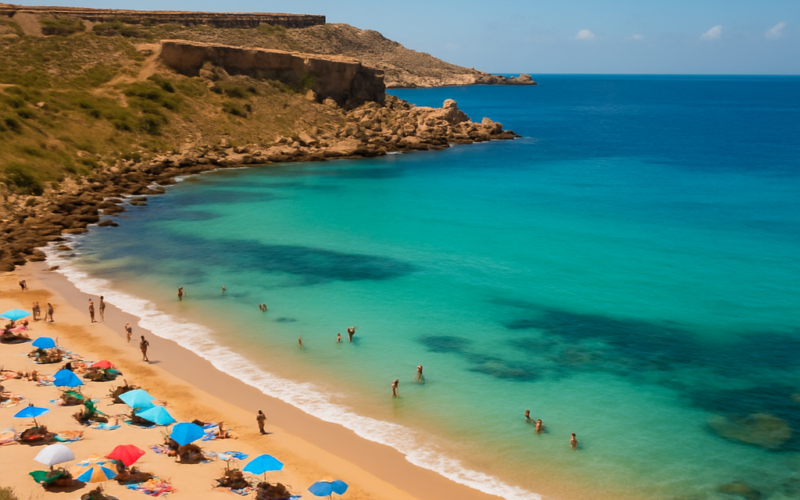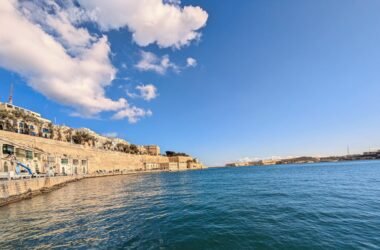Malta and Gozo are famed for their rugged coastlines, golden beaches, and crystal-clear Mediterranean waters. But beyond the postcard charm, how safe and clean are these waters really? For residents, holidaymakers, and families, water quality isn’t just a nice-to-know, it’s essential during the long swimming season. In this article, we dive into how Malta’s bathing waters are monitored, what the latest data reveals, and why the country continues to rank among Europe’s top performers for beach water quality.
95% of Malta and Gozo’s Bathing Waters Rated as “Excellent”
Each year, Malta’s bathing sites are tested under strict European Union standards, primarily focusing on levels of E. coli and intestinal enterococci – bacteria that indicate the presence of faecal contamination. According to the most recent European Environment Agency (EEA) reports and local monitoring from Malta’s Environmental Health Directorate, the country continues to perform exceptionally well.
According to the latest Environmental Health reports, 94.6% of Malta and Gozo’s bathing waters were rated “excellent” in the 2023 season. This figure represents 82 of 87 monitored sites meeting the top classification, with the remaining five rated “good.” This strong track record places Malta well above the EU average.
To achieve an “excellent” status, samples must contain fewer than 250 colony-forming units (cfu) of E. coli and fewer than 100 cfu of intestinal enterococci per 100 milliliters of water. Sampling is carried out at least four times per bathing season, with a combination of pre-season and in-season testing. These results are then assessed across a rolling four-year period to ensure consistency and to detect longer-term trends. For example, data from 2019 to 2022 confirms that Malta’s bathing sites have maintained a consistently high standard of water cleanliness.
Beach Quality Ratings
| Beach | Water Quality | Star Rating | Amenities | Crowd Level | Highlights |
|---|---|---|---|---|---|
| Ramla Bay (Gozo) | Excellent | ⭐️⭐️⭐️⭐️⭐️ | Basic | Medium | Red-gold sand, peaceful, scenic views |
| Golden Bay | Excellent | ⭐️⭐️⭐️⭐️ | Full (cafés, hotel) | High | Family-friendly, sunsets, lifeguards |
| Għajn Tuffieħa | Excellent | ⭐️⭐️⭐️⭐️½ | Limited | Medium | Natural, quiet, clay slopes |
| Blue Lagoon | Excellent | ⭐️⭐️⭐️ | Minimal (boats only) | Very High | Turquoise waters, stunning photos |
| Mellieħa Bay | Excellent | ⭐️⭐️⭐️⭐️ | Full (food, rentals) | High | Shallow water, great for kids |
| Xlendi Bay | Good | ⭐️⭐️⭐️½ | Moderate | Medium | Cliff backdrop, cafes, recent closures |
| St. George’s Bay | Good | ⭐️⭐️½ | Full (urban beach) | Very High | Party beach, walkable, small sand area |
| Balluta Bay | Good | ⭐️⭐️ | Urban setting | High | Local vibe, near promenade |
| Fajtata Bay | Good | ⭐️⭐️½ | Minimal | Low–Medium | Quiet, but had recent sewage issue |
Malta’s Most Loved Beaches: Clean, Safe, and Perfect for a Swim
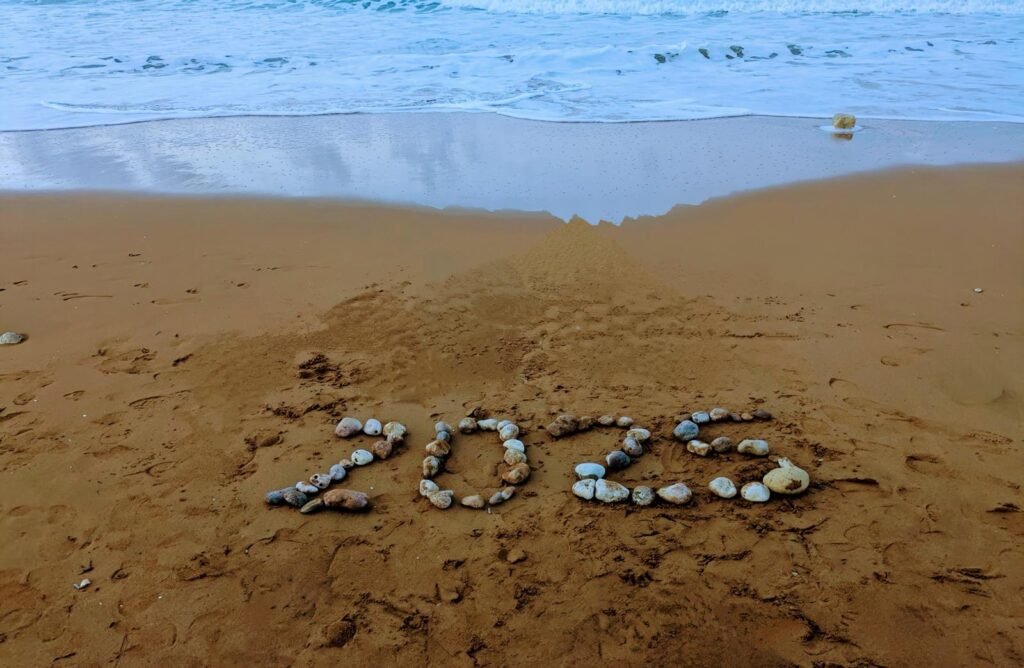
Across Malta and Gozo, some beaches are consistently ranked highly by both locals and visitors – not just for cleanliness, but also for natural beauty, accessibility, and amenities. Several of these are also Blue Flag beaches, meeting international standards for safety and environmental management.
- Ramla Bay (Gozo) – Famous for its striking red-gold sand and unspoilt setting, Ramla Bay is a firm favourite among nature lovers and photographers. Tucked beneath terraced hills and Roman ruins, it’s often described as one of the cleanest and most peaceful beaches in the Maltese Islands. Reviewers consistently praise its calm waters, wide open space, and the sense of “stepping back in time.”
- Golden Bay (Mellieħa) – This crowd-pleaser combines soft golden sand, beach-side cafés, and excellent accessibility. It’s one of the few beaches with regular lifeguard presence and even a nearby hotel. Families love it for the safe swimming, while visitors often highlight the stunning sunsets. In peak season, it can get busy, but many say it’s busy for a reason.
- Għajn Tuffieħa – Just a short walk from Golden Bay, this beach has a quieter, more rugged charm. A steep staircase leads down to the bay, which helps keep the crowds in check. Locals appreciate the untouched feel, the natural clay slopes, and the sense of calm. Many say it’s the “real” Malta beach experience: wilder, quieter, and great for a late swim.
- Blue Lagoon (Comino) – Postcard-perfect and wildly photogenic, the Blue Lagoon is one of Malta’s most iconic swimming spots. Its shallow, electric-blue waters draw in boatloads of tourists daily, especially in summer. While many rave about the clarity and colour of the sea, others advise arriving early, or outside peak season – if you’re hoping to beat the crowds. The government recently attempted to introduce a booking system to limit the number of visitors to the Blue Lagoon, but the plan is currently on temporary hold.
- Mellieħa Bay (Għadira) – Malta’s largest sandy beach stretches out in a shallow crescent that’s perfect for children, paddle-boarders, and beach-goers who like space to spread out. It offers everything from sunbeds to snack stands, and it’s easily reachable by public transport. Reviews highlight the calm waters, gentle slope, and laid-back vibe that make it a favorite for long beach days.
Temporary Beach Closures
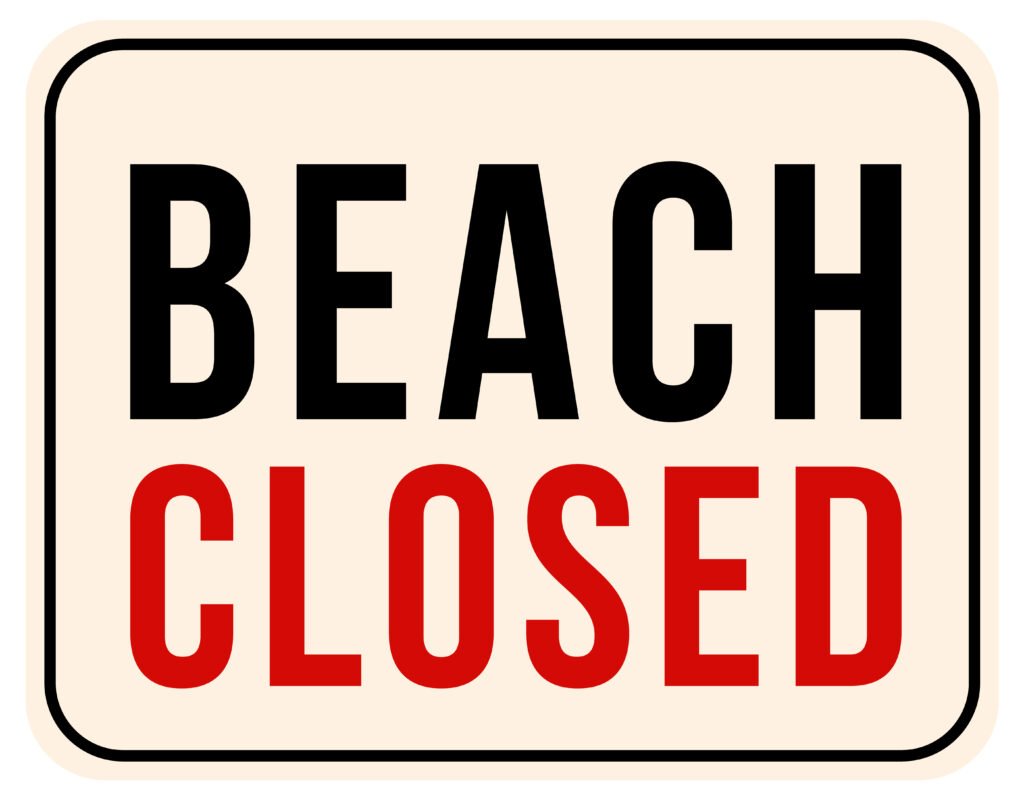
Malta still ranks among Europe’s best for bathing water quality, but even the cleanest seas aren’t immune to the occasional hiccup.
In late June, Xlendi Bay in Gozo was temporarily closed to swimmers after heavy rainfall caused runoff from inland valleys to reach the sea. Testing resumed promptly, and the beach was declared safe again within eight days.
Urban beaches experienced a bit more disruption. Balluta Bay, St. George’s Bay (St Julian’s), and Fond Għadir (Sliema) all recorded E. coli spikes, likely linked to wastewater discharge and overstretched storm-water systems. In Marsascala, Fajtata Bay faced a sewage-related spill just days after receiving Blue Flag status. These incidents were isolated and quickly resolved, but they underscore the need for resilient infrastructure and continuous monitoring, especially following summer storms.
The good news? Malta’s Environmental Health Directorate tests over 85 coastal sites every week during the bathing season, with results made publicly available online. A quick check before you swim can go a long way in keeping your beach day worry-free.
Malta Bathing Water Continues to Outperform the European Average
In 2023, about 85% of bathing sites across the EU were rated “excellent,” and 96% met at least the minimum quality standard. The 2024 report was nearly identical, with 85.4% rated “excellent” and just 1.5% classified as “poor.” These results reflect strong environmental performance across Europe – but Malta stands out.
Since 2005, Malta has consistently ranked among the EU’s best for coastal water quality. Between 2016 and 2024, 94% to 99% of Maltese bathing sites earned an “excellent” rating – testament to a robust system and consistent, proactive monitoring.
| Year | % Excellent (Malta) | EU Average (Coastal) |
|---|---|---|
| 2016 | 98.9% | ~85–89% |
| 2022 | 94.3% | ~88–89% |
| 2023–24 | ~95–99% (est.) | 85–85.4% |
💡
In 2024, all of Malta’s monitored beaches met at least the minimum “sufficient” standard. This places the country alongside top performers such as Cyprus, Bulgaria, Greece, and Croatia, and firmly within the EU’s cleanest coastal nations.
Malta’s Waters: Sparkling Clean and Data-Backed
Despite the summer crowds and sunscreen slicks, Malta and Gozo’s beaches remain impressively clean. In 2022, Gozo scored “excellent” water quality at every testing point—no short-term pollution spikes, no nasty surprises. It’s a sign that wastewater systems are doing their job and someone’s keeping watch.
Of course, clean water doesn’t mean zero environmental issues, but if you’re just hoping not to catch a stomach bug mid-dip, microbiological safety is the gold standard. And Malta nails it. For swimmers, snorkelers, and families, the beaches are among the safest in Europe.
Bottom line: nearly every beach hits or exceeds EU quality benchmarks. The testing is robust, the standards strict, and the results solid. So whether you’re a local or a sun-seeking visitor, you can dive in with confidence.
Interested in the full picture? The Environmental Health Directorate and the European Environment Agency both publish the data openly.
Know your Safety Flags
Understanding beach safety goes beyond cleanliness. Conditions can change quickly due to weather, currents, or marine life, which is why Malta uses a flag system to inform the public about when—and where—it’s safe to swim. It might not be directly related to how clean the water is, but knowing what each flag means is just as essential for staying safe in and around the sea.
Below is a simple guide to the flag warnings you’ll see on Maltese beaches, use it before diving in or not?
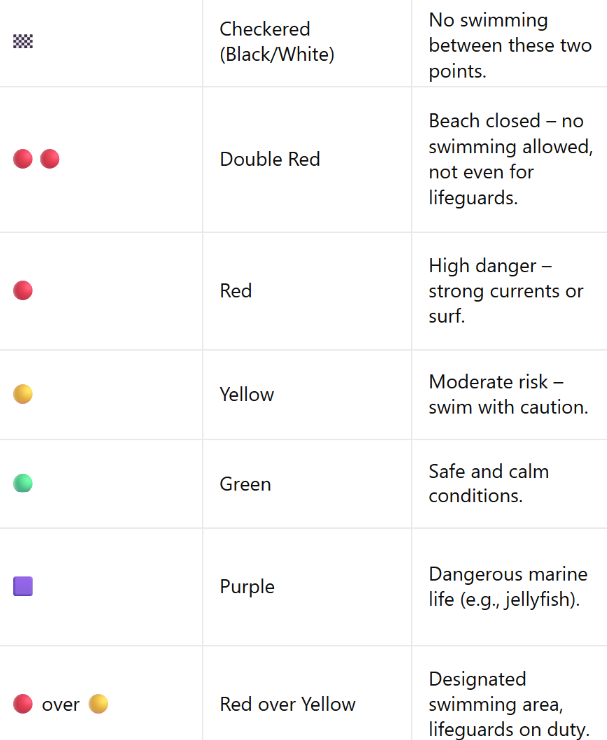
💡
Malta Red Cross
So look for the Green and the Red over Yellow for extra peace of mind when entering the water.
Final Thoughts
Malta and Gozo boast some of the Mediterranean’s finest beaches—places where locals and visitors gather to swim, relax, and soak up the island life. While occasional issues do arise, usually after heavy rain or infrastructure pressure, they’re rare, brief, and well-handled. The overall picture is clear: Malta’s bathing waters not only meet but regularly exceed EU quality standards, backed by robust monitoring and swift public updates. So if you’re planning a seaside escape, dive in with confidence—just check the latest official updates after storms. The sea remains one of Malta’s greatest assets. Let’s enjoy it, and look after it.



